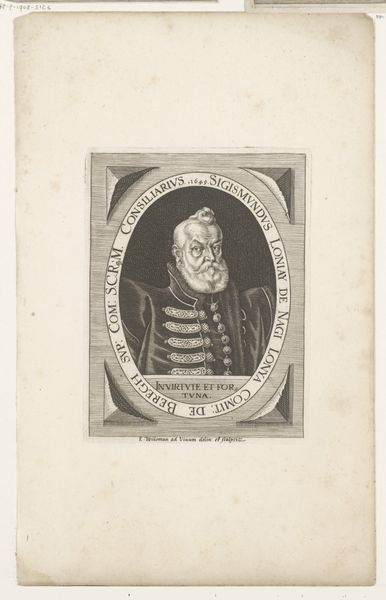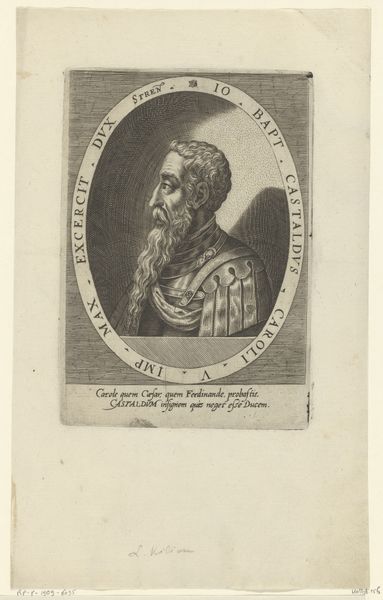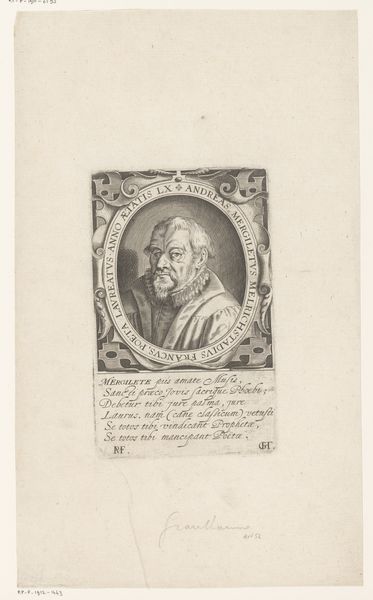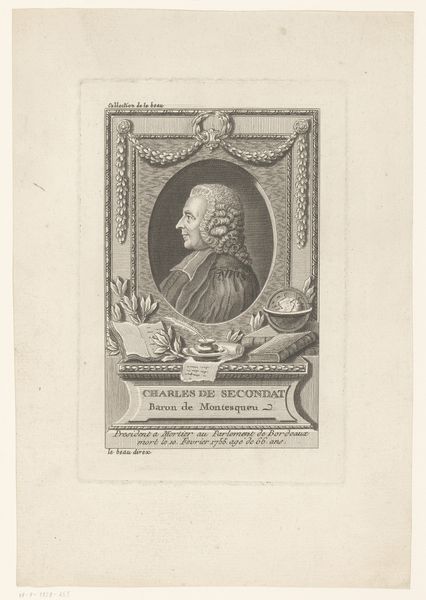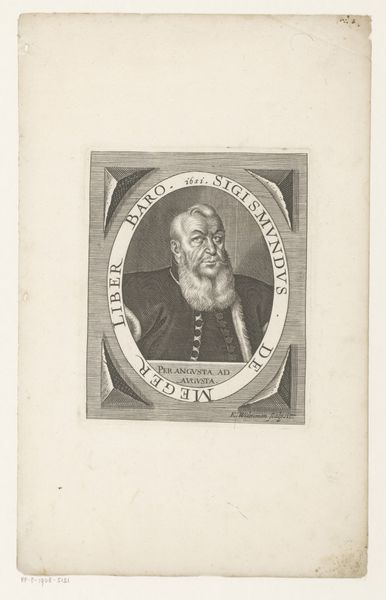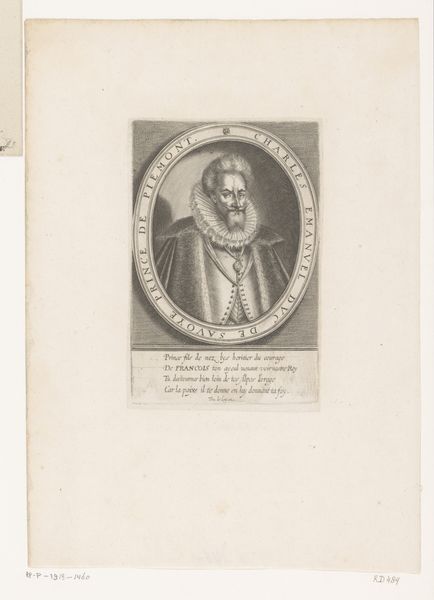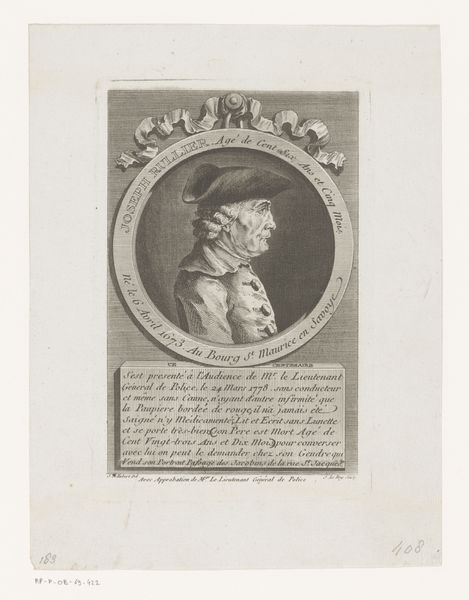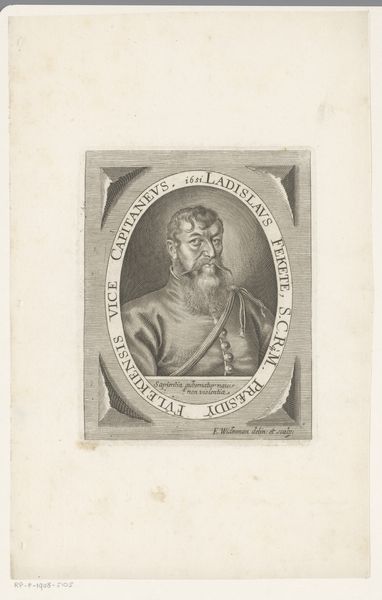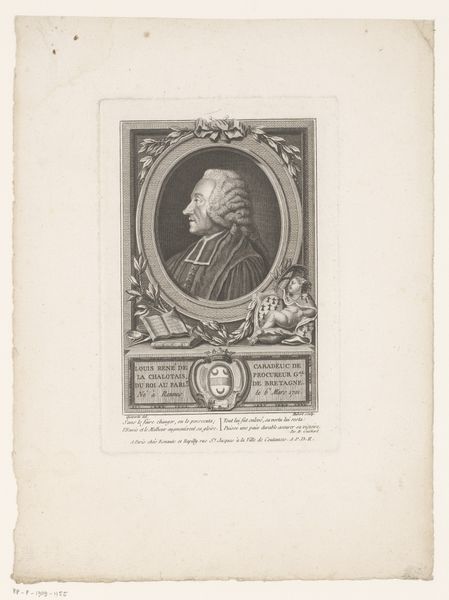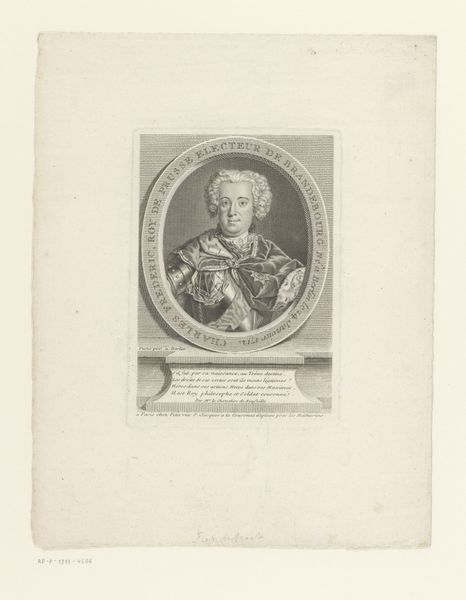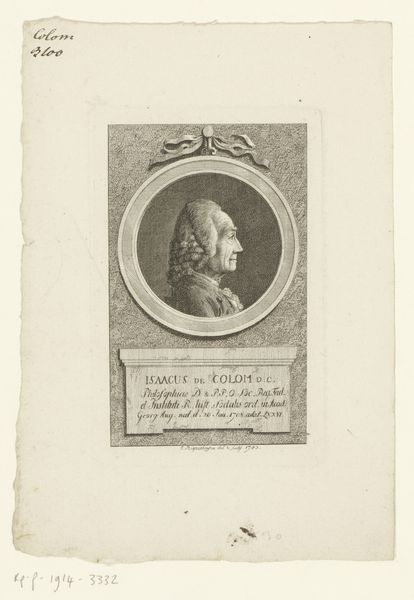
print, paper, engraving
#
portrait
#
baroque
# print
#
paper
#
engraving
Dimensions: height 143 mm, width 116 mm
Copyright: Rijks Museum: Open Domain
Editor: So, here we have Elias Widemann’s "Portret van Stephan Eördögh de Pelesche," an engraving on paper from 1651, currently housed at the Rijksmuseum. I'm immediately struck by the formality of the portrait. The subject is framed so rigidly within that oval, almost like a coin. What do you make of its composition and placement within society at that time? Curator: It's crucial to consider who had the power to commission and circulate such images. This wasn't about personal expression but about reinforcing social hierarchies and solidifying reputations. Consider the inscription. Does “Captain” indicate a military role? And Pelesche is a place, so how does associating a person with a place build authority, especially in print for wide dissemination? Editor: That’s fascinating! So, this wasn’t just a simple portrait; it was a carefully constructed image intended for a public. Does the Baroque style lend itself particularly well to this kind of political image-making? Curator: Absolutely. Think about the Baroque's dramatic use of light and shadow. In printmaking, it's more about line, but that crisp detail and formal pose, do those contribute to a sense of gravitas and control, essential qualities for projecting leadership and societal influence? Who gets memorialized like this and who is excluded? Editor: I never thought about the way portraits could also be statements about social status and the people in power, beyond just likeness. Curator: Precisely. Art isn’t created in a vacuum, and prints make this explicit, circulating political messaging widely. Analyzing portraits like these gives us insight into the power structures of the time and how they were maintained through visual culture. What new perspectives have you gained? Editor: Definitely the active role prints played. The choices about what to include were all about maintaining power in the political arena.
Comments
No comments
Be the first to comment and join the conversation on the ultimate creative platform.
